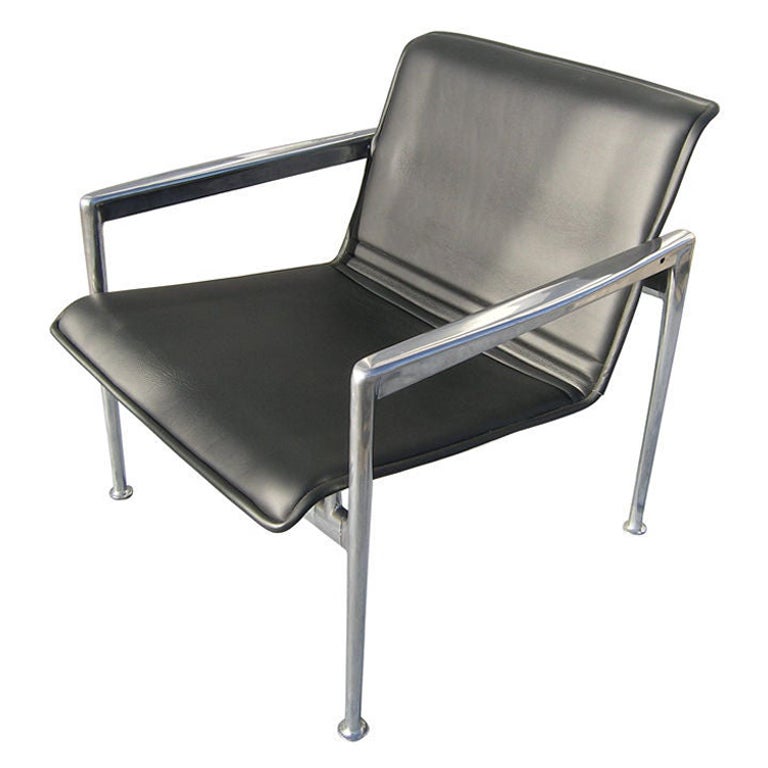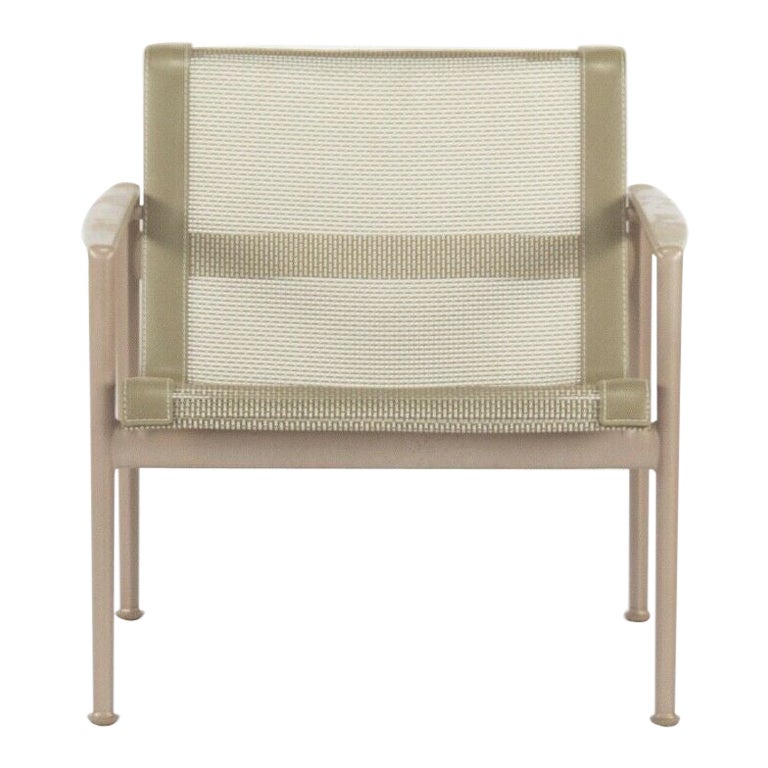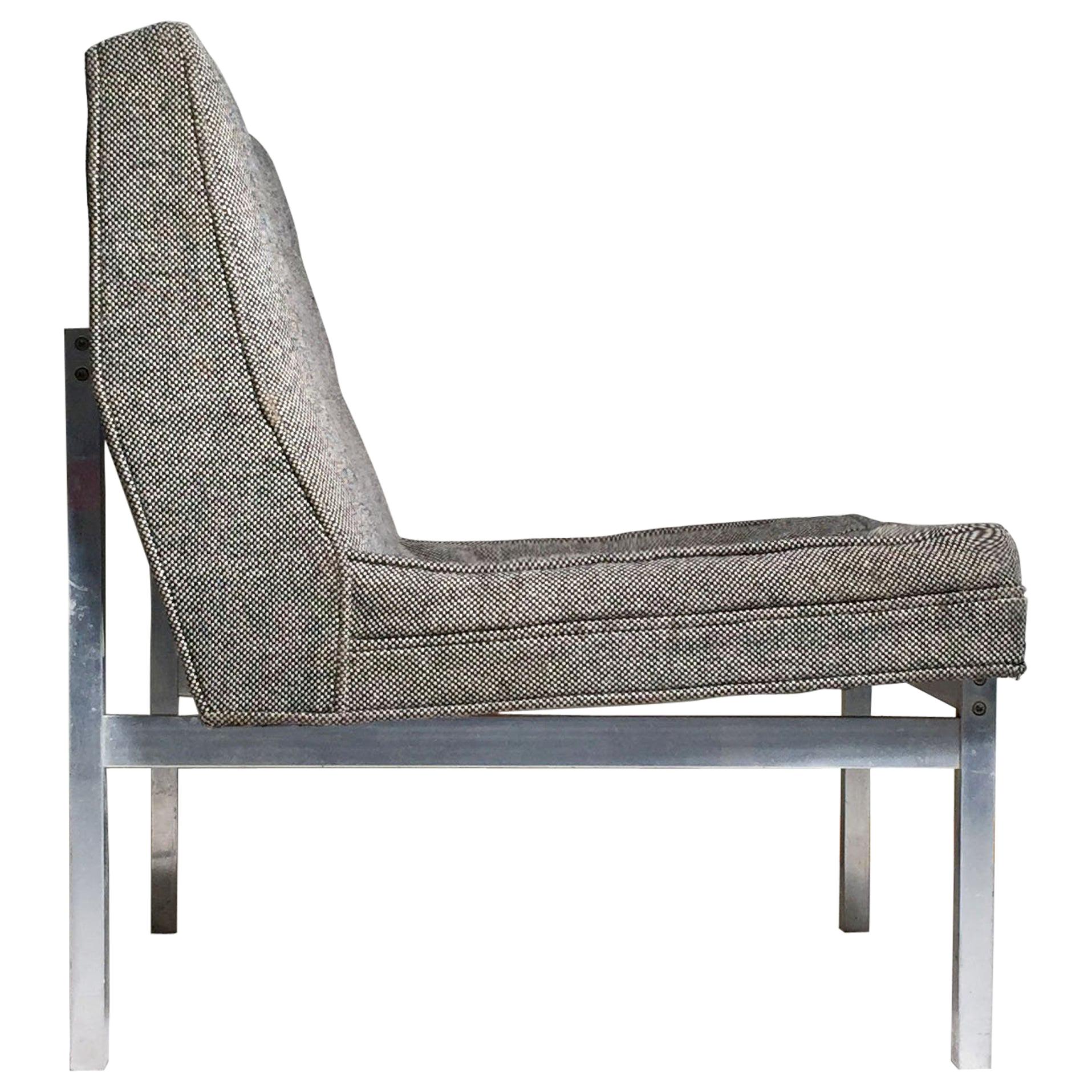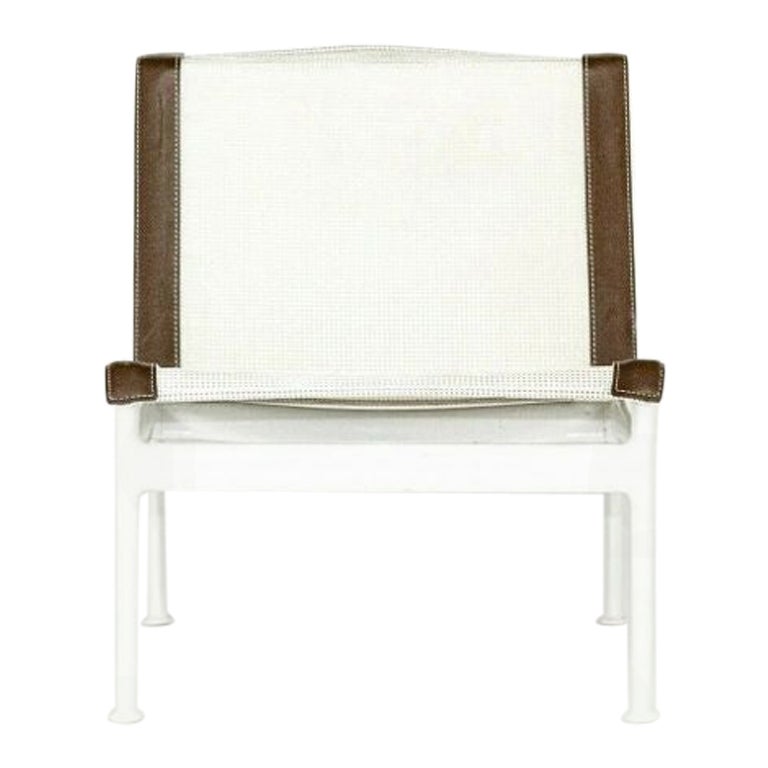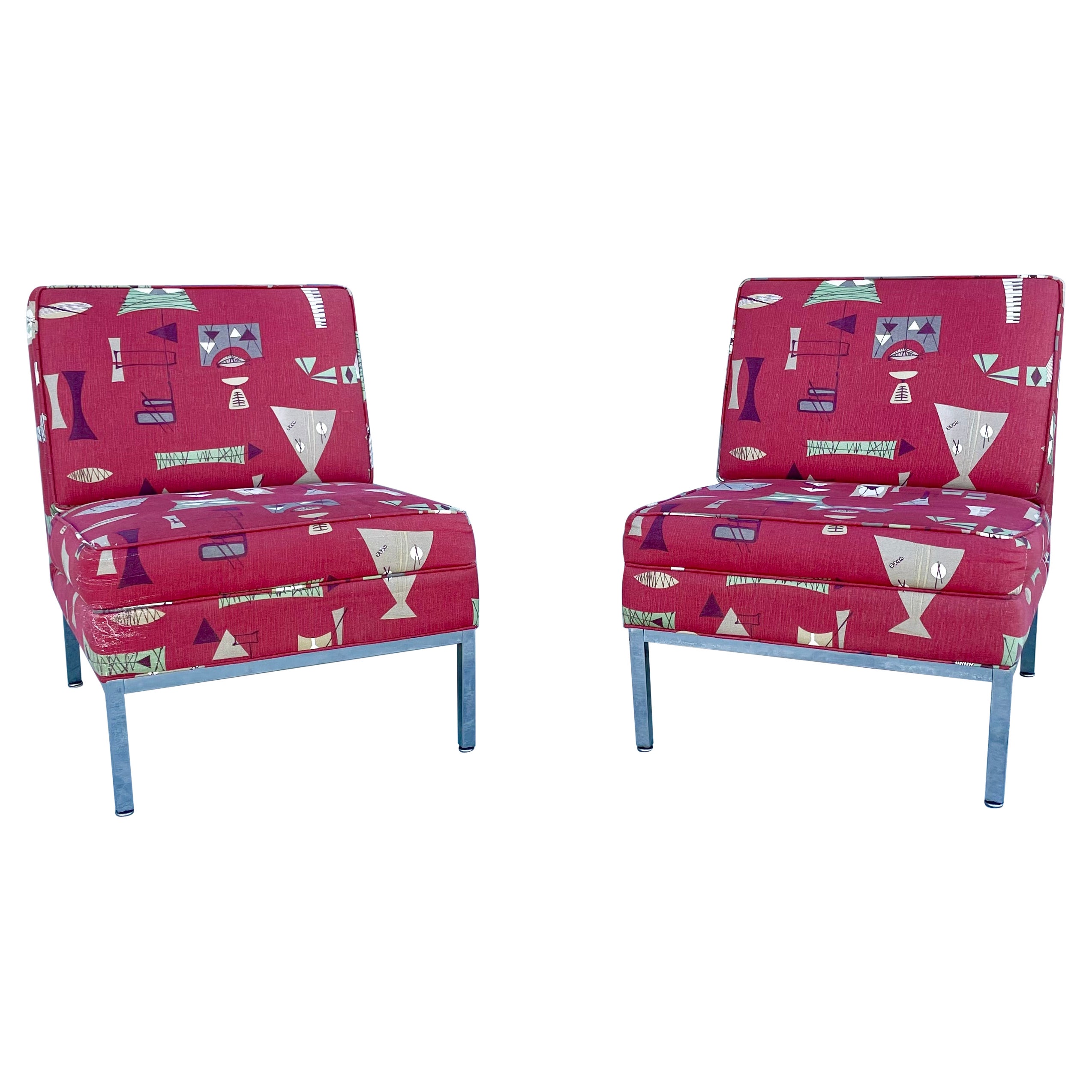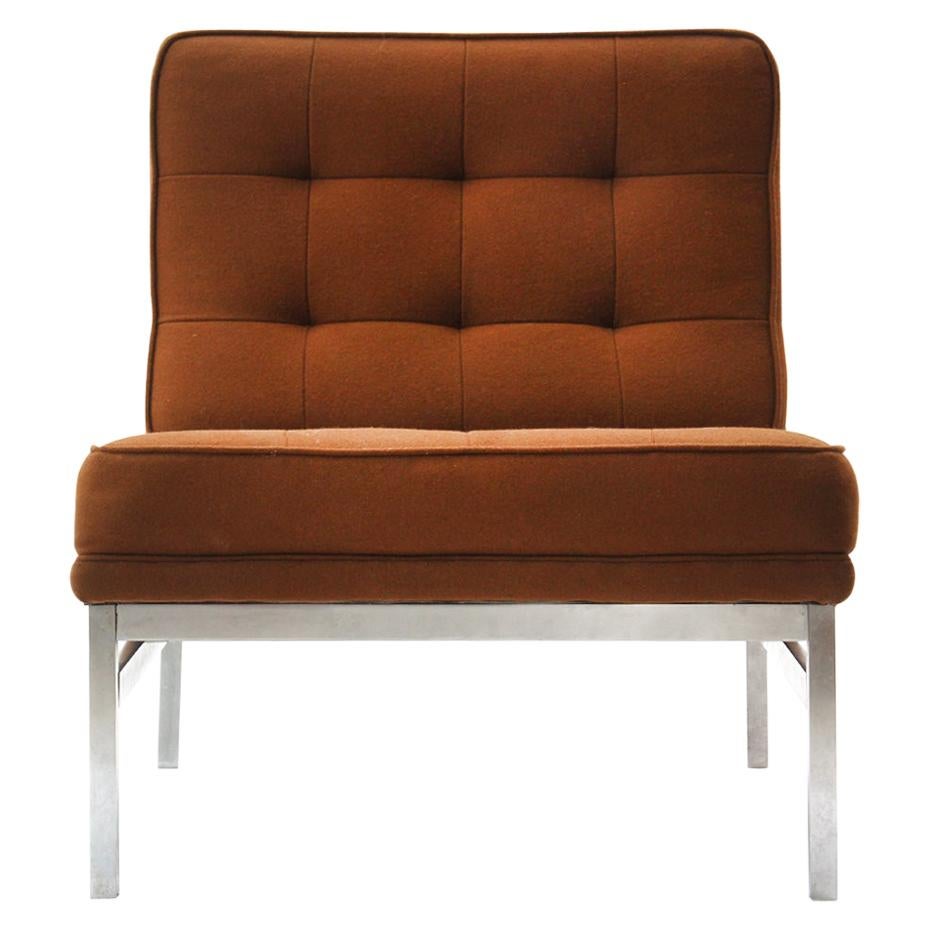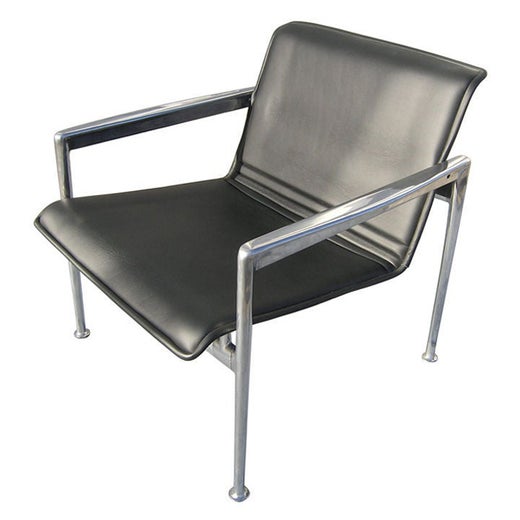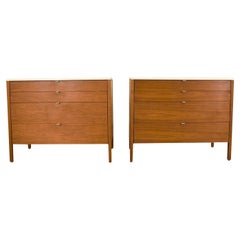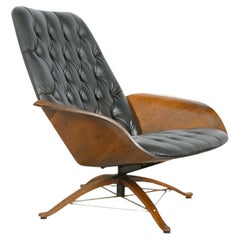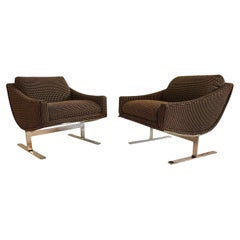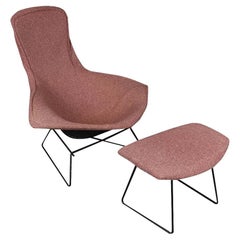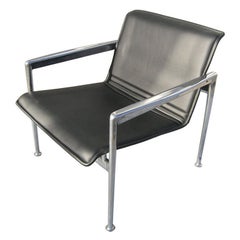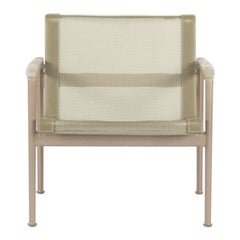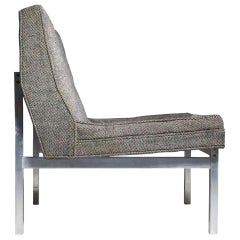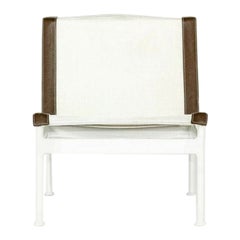Mid-Century Patio Lounge Chairs Florence Knoll Richard Schultz
About the Item
- Creator:Florence Knoll (Manufacturer),Richard Schultz (Designer)
- Dimensions:Height: 29.5 in (74.93 cm)Width: 22 in (55.88 cm)Depth: 23.5 in (59.69 cm)Seat Height: 17 in (43.18 cm)
- Sold As:Set of 4
- Style:Mid-Century Modern (Of the Period)
- Materials and Techniques:
- Place of Origin:
- Period:
- Date of Manufacture:1960s
- Condition:Wear consistent with age and use. Construction sturdy and stable; original signature woven mesh in good condition, one chair has an area that needs repair shown in photo. Mesh is tight on all other chairs. Each chair has small areas of paint loss, overall gorgeous condition.
- Seller Location:Baltimore, MD
- Reference Number:1stDibs: LU5065131368722
Richard Schultz
Many of today’s most popular outdoor furniture designs exist thanks to the talents of designer Richard Schultz. Working in his fluid mid-century modern style, Schultz introduced a wealth of unimposing pieces to gardens and outdoor spaces that proved highly influential in the decades that followed. The airy shapes and timeless appeal of his vintage patio furniture and other works reflect his motto: “Form follows technique.”
Born Moses Richard Schultz in Lafayette, Indiana, in 1926, he displayed an early talent for building steam engines in his family’s basement. Although he had an aptitude for engineering, Schultz's struggles with mathematics later prevented him from completing his engineering coursework at Iowa State University. He joined the U.S. Navy, working as a radio operator. Following his military service, he enrolled at the Institute of Design in Chicago.
After he graduated in 1950, Schultz traveled to Europe, where he spent the summer sketching. When he returned to the United States in 1951, he applied for a position as a designer at the furniture manufacturer Knoll Inc. It is said that Florence Knoll — the company's cofounder and a visionary designer in her own right — hired him on the spot based solely on his sketches.
At Knoll's production facilities in Pennsylvania, Schultz was initially tasked with supporting Italian-American designer and metalsmith Harry Bertoia with the Bertoia Wire collection.
Schultz’s 715 chaise longue, with its adjustable frame and signature solid wheel, paired well with Bertoia’s celebrated woven steel-wire work. It was acquired in 1963 by the Museum of Modern Art for the institution's permanent collection. Another iconic piece Schultz produced around this time was the Petal table. Its wooden “petal” tabletop and enameled metal base were inspired by the plant known as Queen Anne’s lace.
In 1966, one of Schultz’s most esteemed series, the Leisure collection (reissued in 1992 as the 1966 collection), was developed when Florence Knoll requested some outdoor furniture for her Florida home that could withstand the salty ocean air. Schultz designed a line of aluminum patio coffee tables and lounge chairs that were not only fashionable and comfortable but also wouldn't rust.
In 1972, Knoll laid off its designers as part of the company's cost-cutting measures at the time. Schultz's role was a casualty of the reorganization, and he started his design studio — Richard Schultz Design — out of a Pennsylvania farmhouse. He enjoyed success with another of his influential pieces, the Paradigm office chair, which he sold to furniture manufacturer Stow & Davis in 1978. In 2012, Knoll acquired Richard Schultz Design and reissued many of his classic works.
Schultz is recognized today for having been one of the 20th century’s most celebrated outdoor furniture creators.
Shop vintage Richard Schultz tables, seating and other furniture on 1stDibs.
Florence Knoll
Architect, furniture designer, interior designer, entrepreneur — Florence Knoll had a subtle but profound influence on the course of mid-century American modernism. Dedicated to functionality and organization, and never flamboyant, Knoll shaped the ethos of the postwar business world with her skillfully realized office plans and polished, efficient designs for sofas, credenzas, desks and other furnishings.
Knoll had perhaps the most thorough design education of any of her peers. Florence Schust was orphaned at age 12, and her guardian sent her to Kingswood, a girl’s boarding school that is part of the Cranbrook Educational Community in suburban Detroit. Her interest in design brought her to the attention of Eliel Saarinen, the Finnish architect and head of the Cranbrook Academy of Art.
Saarinen and his wife took the talented child under their wing, and she became close to their son, the future architect Eero Saarinen. While a student at the academy, Florence befriended artist-designer Harry Bertoia and Charles and Ray Eames. Later, she studied under three of the Bauhaus masters who emigrated to the United States. She worked as an apprentice in the Boston architectural offices of Walter Gropius and Marcel Breuer; Ludwig Mies van der Rohe taught her at the Illinois Institute of Technology.
In 1941, she met Hans Knoll, whose eponymous furniture company was just getting off the ground. They married in 1946, and her design sense and his business skills soon made Knoll Inc. a leading firm in its field. Florence signed up the younger Saarinen as a designer, and would develop pieces by Bertoia, Mies and the artist Isamu Noguchi.
Florence Knoll's main work came as head of the Knoll Planning Group, designing custom office interiors for clients such as IBM and CBS. The furniture she created for these spaces reflects her Bauhaus training: the pieces are pure functional design, exactingly built; their only ornament from the materials, such as wood and marble. Her innovations — the oval conference table, for example, conceived as a way to ensure clear sightlines among all seated at a meeting — were always in the service of practicality.
Since her retirement in 1965, Knoll received the National Medal of Arts, among other awards; in 2004 the Philadelphia Museum of Art mounted the exhibition “Florence Knoll: Defining Modern” — well deserved accolades for a strong, successful design and business pioneer. As demonstrated on these pages, the simplicity of Knoll’s furniture is her work’s great virtue: they fit into any interior design scheme.
Find vintage Florence Knoll sofas, benches, armchairs and other furniture on 1stDibs.
- ShippingRetrieving quote...Shipping from: Baltimore, MD
- Return Policy
More From This Seller
View AllVintage 1960s American Mid-Century Modern Commodes and Chests of Drawers
Laminate, Walnut
Vintage 1960s American Mid-Century Modern Lounge Chairs
Naugahyde, Walnut
Vintage 1960s American Mid-Century Modern Lounge Chairs
Chrome
Vintage 1960s American Mid-Century Modern Lounge Chairs
Steel
Vintage 1960s Danish Mid-Century Modern Lounge Chairs
Fabric, Foam, Walnut
Vintage 1960s Norwegian Mid-Century Modern Lounge Chairs
Leather, Bentwood
You May Also Like
20th Century American Mid-Century Modern Armchairs
Aluminum
21st Century and Contemporary American Modern Lounge Chairs
Metal
Mid-20th Century American Mid-Century Modern Lounge Chairs
Aluminum
Vintage 1970s American Modern Lounge Chairs
Aluminum
Vintage 1960s American Mid-Century Modern Lounge Chairs
Chrome
Vintage 1950s American Mid-Century Modern Lounge Chairs
Steel
